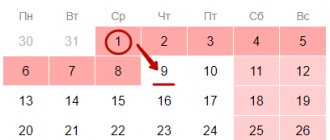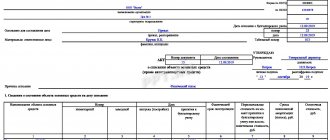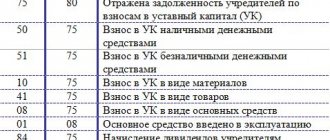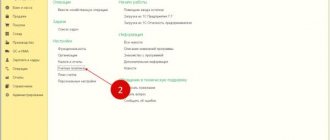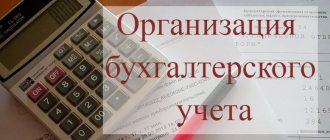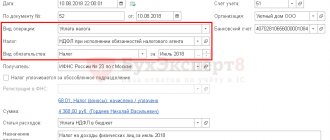What is management accounting and how does it differ from financial accounting? What are the principles of management accounting? What are the features of various methods of organizing management accounting in an enterprise?
Hello, regular readers of the HeatherBober business magazine and everyone who visited our resource for the first time! We have an expert with you - Anna Medvedeva.
Everything related to finance and reporting is always difficult and responsible. Today we will deal with the topic of management accounting , and also see how it fundamentally differs from financial accounting.
At the end of the article, I have prepared for you an overview of companies that will help you establish management accounting at a professional level.
Purposes of each type of accounting
Accounting records transactions and transactions, financial results and cash flows.
It gives a rough idea of what is happening in the business. The main goal of an accountant is to correctly calculate taxes and report on the financial position of the organization on time. Accounting is focused on the past, since accounting works only with what has already happened or is happening now. It is unlikely that your accountant will predict revenue for at least the next month. Accounting does not have this capability, so it is not suitable for management.
Management accounting is aimed at operational analysis, understanding the state of affairs and planning further work.
It is important for management to collect information to make decisions that will help gain benefits in the future. Analysis of past periods helps to see the factors affecting the organization and predict the level of profit and loss in the future. The dynamics are monitored by three basic management reports:
- about cash flow;
- about financial results;
- forecast balance.
Methodological approaches
Management accounting tools can be classified according to various criteria, depending on methodological approaches.
1. Depending on the volume of information processed, the formation of management accounting can be:
- Systematized. Conducted on a regular basis, it includes measurement, assessment and control of costs for all types of processes (supply, production, sales). All costs are grouped by items and elements, sources and media. An internal report is being compiled, the content, timing and frequency of provision of which satisfy internal users and allow an assessment of the activities of the enterprise as a whole and individual structural divisions.
- Differentiated. The content is selective and depends on the objectives.
2. Depending on the goals and objectives of management, the formation of management accounting can be:
- Strategic. Focuses on determining the company's development prospects and providing information to senior management.
- Operational. Ensures achievement of goals in the short term
- Production. The task is to provide information about the cost of production, the amount of profit, and the cost of inventory.
3.Depending on methodological approaches to organizing management accounting, the following can be used:
- Integrated (monistic) system. The management system is interconnected with the financial system. The chart of accounts in the management system is linked to financial accounts.
- Autonomous (dualistic) system It is assumed that management and financial systems will be created separately. The chart of accounts of the management system is not linked to the financial one. The process focuses only on management needs.
4. In terms of the scope of activities and organizational structure of enterprises, the management system can be:
- Complete system. This type applies to the activities of the enterprise as a whole and its individual structural divisions.
- A sufficient system (with a limited set of indicators). The essence of this type is that it is carried out only for individual objects or their group.
5. For efficiency and data control, accounting can be used:
- Factual data. The method of attributing actually consumed resources to expenses, calculating the actual cost and financial results from product sales is used.
- Regulatory data. In this case, it is assumed that certain cost norms will be developed and accounting will also be carried out according to norms (standards) with deviations highlighted.
6. Based on the completeness of costs, the following types can be distinguished:
- Full costs. The cost price is calculated by including all costs
- Marginal. The reduced cost is calculated.
Open data and trade secrets in accounting
Accounting is needed by tax authorities, statistics services, suppliers and other external users. Accounting data is no secret. They are even published publicly on the statistics website.
Management accounting is maintained for internal use by the director, manager or owner. Its data often becomes a trade secret, so even within the organization not everyone has access to it.
Keep records of exports and imports in the Kontur.Accounting web service. Simple accounting, payroll and reporting in one service
Fixed and free forms of accounting
Accounting requirements are defined in detail: it is regulated by laws, regulations, standards, tax clarifications and other documents. The deadlines for compiling and the form of reporting are strictly defined. Accounting is mandatory for all organizations; you simply have no choice whether to do it or not.
Management accounting is simply your right. It is not subject to rules from above; it can be conducted in a way that is convenient for you, based on the specifics of the activity and your own goals. The main thing is that you understand the reports and indicators yourself. The frequency of compilation can be any: week, quarter or even year.
How management accounting is established - 5 main stages
Now we will describe in detail how to organize management accounting.
For clarity, I have compiled a step-by-step algorithm of actions.
Stage 1. Determination of the main consumers of management accounting data
The main customers and recipients of management accounting information are company executives and members of the board of directors, managers at various levels, since they make major business decisions.
If you need to explain to decision makers the essence of a problem or some action plan, then the best way is to prepare a presentation to present the information clearly and in a structured manner.
Stage 2. Formation of a list of required reporting
Next, it is necessary to create and agree with all interested parties a list of management reporting documents - that is, the reports themselves that are to be drawn up. For each report, it is determined when and with what frequency it will be submitted - a clear and detailed description is made.
Stage 3. Preparing a sketch of the methodology
The creation of a management accounting system is carried out by specialists who delve into all the intricacies of the company’s activities. Otherwise, there is a risk that the management reporting system will not meet its implementation goals and will not bring the desired results.
What needs to be done at this stage:
- identify reporting blocks and accounting areas;
- develop interim reporting documents and calculation methods;
- determine methods for entering and processing information into the system;
- ensure effective data control;
- distribute responsibilities among specialists who perform data preparation;
- prepare a test version of the methodology and make trial calculations;
- evaluate the feasibility of the developed draft methodology.
Then the prepared model is approved by the company management.
Stage 4. Introduction of management accounting methodology
If all previous activities have been successful, the management accounting system is put into operation.
The implementation of a management accounting project will reveal shortcomings made in the preparation of the methodology. Perhaps this will be a heterogeneous approach of different departments to data processing, or inconsistency of information intersecting in different reports, or imperfect software, etc.
There may also be other overlaps in the interaction between departments.
Example
At the ChelyabinskStroyMotazh , problems arose with the reliability of information about the sale of goods.
During the audit, it turned out that the accounting department did not timely enter information about received funds into the database. Because of this, the closure of the institution’s balance sheet was delayed.
Stage 5. Organization of control over the implementation of the management accounting system
An important part of control is to evaluate how cost-effective the selected management accounting system is. But first you need to make sure that all performers are trained, the goals are clear, and there are no errors in the methodology.
Continuing the topic, we offer some practical advice from an expert.
The reality of data in accounting
We reflect in accounting what is written in the contract. And in management accounting we focus on the real meaning of the operation.
For example, sale with subsequent repurchase: the contract is concluded with the condition that the seller can buy the goods from the buyer at any time and retains all the risks and benefits of owning the goods. Such a transaction is a disguised loan or financing. There is no point in recognizing revenue from such a transaction in management accounting, since the revenue figure will be higher than in reality. But in accounting you will have to do this.
Kinds
CU is divided into several types.
Industrial
Is the main type. With its help, you can calculate and distribute costs in accordance with the management rules and regulated accounting. If all three parameters coincide (managerial, regulated and production), then the reduction in labor costs when closing the period can be determined by calculating costs according to the regulated type. Automation of this type is performed quite well in the 1C program.
Marginal
It is an indicator that determines the dependence of profit on the number of products produced and sales. There is no direct relationship between profit and sales volume, because other factors intervene. An increase in the number of products sold increases revenue, but imposes additional costs on expanding market presence and the need to reduce the price of the product. Margin accounting allows you to solve issues of planning product volumes, costs, as well as expenses to obtain more operating profit.
Strategic
Distinguished by long-term prospects in the areas of increasing competitiveness and steps to ensure the development of the company. The main issues of this type are financial and resource support for the future of the company. Accounting and planning of innovation and investment work is carried out.
Budget
This type is used to improve transparency, better predictability of economic and financial indicators for managers, and increase responsibility for the quality of work of divisions and departments. Income planning and fixation of spending limits are used.
Kinds
The right level of detail
Accounting evaluates the entire enterprise and combines information about all departments, products, and employees.
Management accounting can look at the entire company or individual divisions - in depth and in more detail. This allows you to better understand the business from the inside and know what is happening in it and why. You see not just the overall flow of funds in the company, but also indicators by department and even employee. Not just see the profit, but understand its sources. Don’t just take into account goods, but divide them into groups and types.
Requirements for organizing the process
The organization of management is based on various parameters of the enterprise's management policy. These parameters are:
- production cycles and their frequency;
- continuity of data and more than one use;
- creating reporting values that are relevant to all levels of management;
- use of budgeting;
- efficiency, breadth and reliability of data, as well as the ability to analyze them;
- use of identical units of measurement;
- the ability to evaluate the performance of certain structural departments.
Note! The automated process, which is increasingly being introduced in enterprises, has its own requirements regarding the organization of the process.
Today they are:
- understandability for any user;
- timeliness of identifying and sending information;
- reality and completeness of provision of all parameters of economic activity;
- regularity of information collection;
- compliance of indicators with expectations.
Metrics to Track
Accounting is carried out in monetary terms and is governed by numbers. Management accounting includes natural and even verbal indicators: the number of defects, productivity, customer and employee satisfaction, staff turnover, average order size and others. These indicators affect the business just as much as numbers, so they need to be monitored and adjusted. Often this becomes the main tool in optimizing the operation of the entire enterprise.
A web service for small businesses, Kontur.Accounting, helps you keep records, pay salaries and submit reports, and also generates five management reports. Monitor business development and automate routine accounting operations. All new users can get acquainted with the system and work in Accounting for free for two weeks.
Implementation rules
The control system in its automated execution must be a system process. Owners of large companies, even in the main cities where all available information accumulates, make many mistakes. They can and should be corrected, but this requires additional cash injections and a lot of time. To avoid common problems, you need to consider the following factors:
- The assessment of accounting components must be carried out and be based not only on financial methods, but include many others. The development of rules is based on domestic and international management standards.
- A high-quality introduction of a management automation system should be carried out only after a thorough inspection of the enterprise and explanatory conversations with managers and employees about the benefits of such an undertaking.
- Internal TOS must include only important data and be presented in an easy-to-read format. It is necessary that the information is easy to read, visual and divided into components in detail. The data must have the parameters that are required for management purposes. The presented approach reduces the time consumption of document processing, and also presents them in a more useful and informative manner.
- When creating a management system and its automation, the maximum possible number of employees from the state should be involved. This is due to the fact that this way they will be able to familiarize themselves with and subsequently use the developed processes more effectively. It would be a mistake to involve only related employees (economists, accountants).
- During development, it is necessary to identify all business processes, direct efforts and resources to optimize them, and separate powers and functions to avoid duplication.
- Improving the creation of control systems must be constant. A single optimization will not give a tangible effect; it must be carried out constantly. The overall operation of the system must be improved and improved continuously. Any positive innovations should be implemented practically at the time of their release. This will allow you to constantly stay up to date with the latest developments and improve business efficiency.
- The control system, its development and improvement cannot be aimed at solving a single problem. The system must solve a whole range of tasks and problems in all areas of the company’s activities. It would be a mistake to focus optimization on the quality of accounting and management software, and at the same time use paper document flow.
- Data exchange should be carried out at precisely specified times. The development and introduction of information technologies will help with this.
- Management tools, if fully consistent with the goals and objectives of the enterprise, will help avoid problems associated with limited technical capabilities.
- The development of a regulated circulation of documentation, during which the deadlines for submitting reports and documentation would be displayed, employees would be motivated to comply with established standards, and the creation of a document circulation schedule is the most effective solution.
Company management system
Management accounting is a system for obtaining information about an enterprise. The more transparent it is, the better it will be to assess the state of affairs. There are four types of CU. When implementing the system in a company, you must comply with the rules and requirements for organizing the accounting process. This will allow you to achieve maximum efficiency for both employees and the enterprise as a whole.
